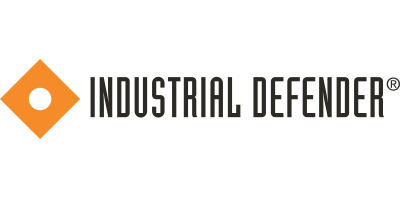 News Release
News Release
100 SMALL BUSINESSES OWNED BY PEOPLE OF COLOR IN KING AND PIERCE COUNTIES TO EACH RECEIVE A $10,000 GRANT FROM COMCAST RISE TOTALING $1 MILLION
Comcast Washington
Comcast today announced it will award $1 million in grants to 100 small businesses owned by people of color in King and Pierce Counties, as well as technology and marketing resources to eligible businesses in the area. King and Pierce Counties are among six markets that also include Houston, Miami, Oakland, the Twin Cities, and Washington, D.C. that were selected to award a $10,000 grant to 100 local businesses from the Comcast RISE Investment Fund, for a total of $5 million across 600 businesses. Beginning on October 1, and through October 14, eligible businesses can apply for Comcast RISE monetary grants, and, or marketing and technology Services at www.ComcastRISE.com. Winners will be notified in November. Local small businesses seeking more information about the $10,000 grants may learn more about the Comcast RISE Investment Fund at a virtual public event being held tomorrow in partnership with the Seattle Metropolitan Chamber of Commerce, Seattle Southside Chamber of Commerce, Tacoma-Pierce County Chamber of Commerce, and Greater Seattle Business Association (GSBA). Interested parties may register here: Keep Rising: New Support Coming for Small Businesses Tickets, Wed, Sep 15, 2021, at 11:00 AM | Eventbrite. “Independent small businesses are the backbone of our communities, and today, more than ever, small businesses owned by people of color are hurting. Comcast is committed to supporting small businesses who have been hit the hardest by the economic impact of the pandemic and we are excited to announce the next wave of our Comcast RISE program here in Washington,” said Rodrigo Lopez, Region Senior Vice President, Comcast Washington. “Through the Comcast RISE Investment Fund and grants offering media, marketing, creative and technology services we aim to give meaningful support to the small businesses who are shaping our communities.” To help drive awareness about the program and provide additional support and training in King and Pierce Counties, Comcast is partnering with the Seattle Metropolitan Chamber of Commerce, Seattle Latino Chamber of Commerce, Seattle Southside Chamber of Commerce, Tacoma-Pierce County Chamber of Commerce, and Greater Seattle Business Association (GSBA). The Investment Fund is an extension of Comcast RISE, the multi-year, multi-faceted initiative launched in October 2020 to support small businesses owned by people of color and provide the resources and tools they need to thrive for years to come. The Comcast RISE Investment Fund is focused on small businesses that have been in business for three or more years with 1-25 employees. Businesses must be in the following geographic locations to be eligible: Miami, FL (Miami-Dade and Broward Counties); Minneapolis-St. Paul, MN (Anoka, Carver, Dakota, Hennepin, Ramsey, Scott, and Washington Counties); Oakland, CA (City of Oakland); Seattle, WA (King and Pierce Counties); and Washington, D.C. (Wards 1-8). Comcast RISE Marketing and Technology Services In addition to the Investment Fund, Comcast RISE, which stands for “Representation, Investment, Strength and Empowerment,” provides the opportunity for small businesses owned by people of color nationwide to apply for one or more of the following support focus areas with the opportunity to receive one. Marketing Services: The following services from Effectv, the advertising sales division of Comcast Cable, and its creative agency, Mnemonic, are designed to help recipients with their marketing and media campaigns, including: Media: A linear TV media campaign to run over a 90-day period. Creative Production: Turnkey:30 TV commercial production, plus a media strategy consultation and 90-day media placement schedule. Consulting: Advertising and marketing consultations with local Effectv marketing, research, and creative teams to gain insights on how to drive business. Technology Makeovers: The state-of-the-art equipment and technology upgrade from Comcast Business includes computer equipment as well as Internet, Voice, and Cybersecurity services for up to a 12-month period. (Taxes and other fees may still apply for technology makeover services.) Monetary Grants: In round one, which was announced in April of 2021, the Comcast RISE Investment Fund provided $5 million in grants to 500 small businesses owned by people of color in five cities: Philadelphia/Chester, Houston, Atlanta, Chicago, and Detroit. As noted above, the Comcast RISE Investment Fund will provide an additional $6 million in grants to 600 small businesses owned by people of color in six cities: Miami, Houston, Oakland, Seattle, the Twin Cities, and Washington, D.C. All eligible applicants will receive a monthly Comcast RISE newsletter with educational content, and all small business owners can visit the Comcast RISE destination on the X1 platform featuring aggregated small business news, tips, insights, and more. Just say “Comcast RISE” into the X1 voice remote. Comcast’s Ongoing Commitment to Advancing Digital Equity Comcast RISE is part of an expanded Diversity, Equity, and Inclusion (DE&I) commitment that Comcast announced in June 2020, as well as an ongoing cross-company effort to address digital inequities. Over the next 10 years, Comcast is pledging $1 billion to programs and partnerships that will connect an estimated 50 million people with the skills, opportunities, and resources they need to succeed in an increasingly digital world. More information and the applications to apply for either the grant program or marketing and technology services are available at www.ComcastRISE.com. About Comcast Business Comcast Business offers Ethernet, Internet, Wi-Fi, Voice, TV and Managed Enterprise Solutions to help organizations of all sizes transform their business. Powered by an advanced network, and backed by 24/7 customer support, Comcast Business is one of the largest contributors to the growth of Comcast Cable. Comcast Business is the nation’s largest cable provider to small and mid-size businesses and has emerged as a force in the Enterprise market; recognized over the last two years by leading industry associations as one of the fastest growing providers of Ethernet services. For more information, visit www.business.comcast.com or call 866- 429-3085. Follow on Twitter @ComcastBusiness and on other social media networks at http://business.comcast.com/social. About Effectv Effectv, the advertising sales division of Comcast Cable, helps local, regional and national advertisers use the best of digital with the power of TV to grow their business. It provides multi-screen marketing solutions to make advertising campaigns more effective and easier to execute. Headquartered in New York with offices throughout the country, Effectv has a presence in 66 markets with nearly 35 million owned and represented subscribers. For more information, visit www.effectv.com. About Comcast Corporation Comcast Corporation (Nasdaq: CMCSA) is a global media and technology company that connects people to moments that matter. We are principally focused on broadband, aggregation, and streaming with over 56 million customer relationships across the United States and Europe. We deliver broadband, wireless, and video through our Xfinity, Comcast Business, and Sky brands; create, distribute, and stream leading entertainment, sports, and news through Universal Filmed Entertainment Group, Universal Studio Group, Sky Studios, the NBC and Telemundo broadcast networks, multiple cable networks, Peacock, NBCUniversal News Group, NBC Sports, Sky News, and Sky Sports; and provide memorable experiences at Universal Parks and Resorts in the United States and Asia. Visit www.comcastcorporation.com for more information. Contact Details Comcast Andy Colley Andy_Colley@Comcast.com Company Website https://washington.comcast.com/
September 14, 2021 08:45 AM Pacific Daylight Time
 News Release
News Release






